Occupational Safety Training for Handheld Angle Grinder Operation
99,000 ₫
Note: The price above is calculated per person and may fluctuate depending on the number of participants in the course and market conditions. For more accurate pricing support, please refer to the price list or contact our consulting staff directly.
Occupational safety is an important issue when operating an angle grinder and must be addressed promptly to ensure the health and safety of workers and enhance the reputation of businesses here. The Occupational Safety Training course is one of the effective solutions to raise awareness of how to prevent workplace accidents for workers operating an angle grinder.
Table of Contents
Toggle1. Overview of Handheld Angle Grinders
a. What is a Handheld Angle Grinder?
A handheld angle grinder is a type of portable power tool used for grinding, cutting, or shaping various materials using a grinding or cutting disc. Angle grinders are commonly used in a wide range of applications, including construction, repair, metal fabrication, and various DIY tasks.
Handheld angle grinders typically have a grinding head of varying diameters depending on the specific task. They can be adjusted to grind or cut at different angles, enabling precise and versatile operations.
However, a handheld angle grinder is a powerful tool and must be used carefully following instructions to ensure user safety. Safety measures include wearing protective eyewear, masks, gloves, and protective clothing, as well as securing the grinder properly to prevent accidents.

b. Operating Principle of Handheld Angle Grinders
The operating principle of a handheld angle grinder is simple. It uses an electric motor to spin a disc at very high speed. This disc can be a grinding or cutting disc depending on the task.
Here is a basic overview of how a handheld angle grinder works:
- Power supply: When the grinder is connected to an electric source, it starts operating.
- Motor rotation: The motor inside the grinder generates rotational force, usually at high speeds, often between 5,000 and 10,000 RPM or even higher.
- Grinding or cutting disc: The motor transfers rotational power to the disc, creating a spinning surface for cutting or grinding.
- Grinding or cutting: When the disc is applied to the material with appropriate pressure, it grinds or cuts the material, depending on the disc type and applied force.

c. Industries that Use Handheld Angle Grinders
Handheld angle grinders are versatile tools used in various industries. Some common industries and applications include:
- Construction and installation: Used to cut, grind, and shape construction materials such as concrete, brick, wood, steel, and stone.
- Metal fabrication: Used for metal surface grinding, cutting metal, and removing defects on metal surfaces.
- Welding and repair: Welders and repair technicians use grinders to prepare metal surfaces before welding or to remove welding spatter and defects.
- Woodworking: Used for surface grinding, cutting, or shaping wooden components.
- Automotive repair: Mechanics use angle grinders to cut and grind metal parts on vehicles.
- Stone and gemstone processing: Used to create products and jewelry from stones and gems.
- DIY applications: Consumers use grinders for projects like garden construction, furniture making, and household repairs.
2. Overview of Safety Training for Operating Handheld Angle Grinders
a. What is Occupational Safety Training?
- Occupational safety training for operating handheld angle grinders consists of sessions designed to raise awareness on accident prevention for workers. Workers directly operating angle grinders belong to group 3.
- The training helps workers identify hazards and prevent accidents, minimizing risks in the workplace.
REGISTER FOR OCCUPATIONAL SAFETY TRAINING SERVICE
b. Training Duration
Initial safety training:
- Total training time is at least 24 hours, including testing.
- 8 hours of theory on policies and occupational safety laws
- 8 hours of theory on basic occupational safety knowledge
- 4 hours of theory on specialized training content
- 2 hours of practical training on specialized content
- 2 hours of final theory examination
The safety training center schedules multiple sessions depending on worker availability. Typically, there are 6 sessions over 3 days, provided the employer can arrange continuous training time.
Periodic safety training:
- Before the occupational safety card expires, workers must undergo periodic training, with a minimum duration of at least 50% of the initial training time.
Explanation: The total periodic safety training time is at least 12 hours, including testing. Upon completion and passing the test, workers receive renewed occupational safety cards.
c. Training Content
| No. | TRAINING CONTENT | TRAINING HOURS | |||
| Total | Including | ||||
| Theory | Practice | Exam | |||
| I | Policies and Occupational Safety Laws | 8 | 8 | 0 | 0 |
| 1 | Overview of occupational safety legal documents. | 6 | 6 | ||
| 2 | Standards and technical regulations for occupational safety. | 1 | 1 | ||
| 3 | Specific regulations by government agencies on occupational safety when building, expanding, or renovating workplaces, using and maintaining machines, equipment, materials, or substances with strict safety requirements. | 1 | 1 | ||
| II | Basic Occupational Safety Knowledge | 8 | 8 | 0 | 0 |
| 1 | Basic knowledge of workplace hazards. | 4 | 4 | ||
| 2 | Methods to improve working conditions. | 1 | 1 | ||
| 3 | Safety culture in production and business. | 1 | 1 | ||
| 4 | Rights and responsibilities of employers and employees; occupational safety policies; roles of safety officers. | 1 | 1 | ||
| 5 | Safety regulations, signage, personal protective equipment, first aid, and occupational disease prevention. | 1 | 1 | ||
| III | Specialized Training Content | 6 | 4 | 2 | 0 |
| Knowledge of machines, devices, hazardous substances; risk analysis, occupational safety management, safe operating procedures. | 6 | 4 | 2 | ||
| IV | Final Safety Exam | 2 | 2 | 0 | 0 |
| Total | 24 | 22 | 2 | ||
See more training content for all 6 groups
d. Occupational Safety Card
After completing the safety training and passing the test, workers receive an Occupational Safety Card (commonly called Group 3 Safety Certificate).
Group 3 cards display full information including name, date of birth, job, working environment, training duration, red stamp, and signature confirming completion.
According to Clause 2 of Article 24, Decree 44/2016/ND-CP, there are two cases:
- If the employer and employee have a labor contract, the employer must sign and stamp the safety card after the worker completes training and passes the exam.
- If the worker is freelance or seasonal, without a labor contract, the training unit must sign and stamp the safety card after training and passing the exam.

Group 3 Occupational Safety Card for Handheld Angle Grinder Operators
3. Hazards When Operating a Handheld Angle Grinder
Operating a handheld angle grinder can involve many hazards if proper safety measures are not followed. Here are some common hazards when using a handheld angle grinder:
- Injuries and cuts: The grinding or cutting disc of a handheld angle grinder can cause injuries if not used carefully. Injuries may occur if the grinder slips off the material or if you do not control it accurately, potentially resulting in severe cuts.
- Dust and sparks: Angle grinders generate dust and sparks when grinding or cutting metal. Dust can be harmful to health, especially if you do not wear a respiratory mask. Sparks can cause fires or eye injuries if safety goggles are not worn.
- Electrical accidents: Handheld angle grinders are powered by electricity and have cords. Electrical accidents may occur if the cord is damaged or if safety precautions are ignored while using the grinder.
- Noise hazards: Handheld angle grinders produce extremely loud noise, and prolonged exposure can damage hearing. Wearing ear protection or earmuffs is essential for auditory safety.
- Disc hazards: Grinding discs can malfunction or break during use, creating a risk of serious injury. Regular inspection and maintenance of discs are crucial for safety.

4. Measures to Control Workplace Accidents When Operating a Handheld Angle Grinder
To control and reduce the risk of workplace accidents when operating a handheld angle grinder, follow these safety measures:
- Wear personal protective equipment (PPE):
- Safety goggles: Protect your eyes from sparks, dust, and flying debris while using the grinder.
- Hearing protection: Wear earplugs or earmuffs to protect hearing from high noise levels.
- Respiratory mask: Use a respiratory mask when working in dusty environments, especially when grinding wood or metal.
- Adjust the angle grinder:
- Ensure the angle grinder is regularly maintained and functioning properly.
- Ensure the grinding or cutting disc is correctly and securely attached.
- Check the motor, power cord, and switches before use.
- Work area safety:
- Keep the work area clean and well-ventilated to reduce dust and fumes.
- Ensure no one else is near the work area, maintaining a safe distance.
- Approach:
- Keep hands and body away from the grinding or cutting disc to avoid injury.
- Speed control:
- Use a speed appropriate for the specific task and material being processed.
- Machine control:
- Hold the handheld angle grinder firmly and control it accurately while using.
- Avoid applying excessive pressure to prevent the grinder from slipping off the material.
- Regular inspection of the handheld angle grinder to detect early safety issues such as wear, tear, or mechanical damage, reducing the risk of workplace accidents.
- Use quality angle grinders from reputable stores to ensure stability and safety of the equipment.
5. Benefits of Occupational Safety Training
An Toàn Nam Việt provides your business with the following benefits upon completing occupational safety training courses in accordance with Decree 44/2016/ND-CP on Occupational Safety and Health:
- Employees can recognize potential occupational hazards and take preventive measures to avoid accidents.
- Your company can establish risk prevention measures in production, operation, and maintenance processes.
- Minimize costs associated with workplace safety risks.
- Uninterrupted production enhances labor productivity and product quality.
- Compliance with labor safety regulations reduces legal risks.
- Enhances reputation and professionalism, elevating your business brand.
Nam Việt’s training courses provide solutions to prevent external factors from endangering individuals, helping them avoid injuries or, in severe cases, fatalities.
REGISTER FOR OCCUPATIONAL SAFETY TRAINING SERVICE
6. Customer Feedback After Completing the Training
An Toàn Nam Việt has years of experience accompanying many businesses in Vietnam, particularly in the southern provinces. This responsibility is invaluable, so our Occupational Safety Training is increasingly professional. Our motivation comes from both positive feedback and constructive suggestions from clients. Below are some testimonials from our partners.
Bac Nam E&C Investment and Construction Joint Stock Company
“My first experience using An Toàn Nam Việt’s service was surprisingly excellent, with 24/7 support from the consulting team. The class organization was quick and convenient for our company. Thank you very much!”
See more customer interviews after using the service from An Toàn Nam Việt
7. Occupational Safety Training Capabilities of An Toàn Nam Việt
An Toàn Nam Việt is a reputable and high-quality occupational safety training center in Vietnam. Our courses are continuously conducted at workshops, factories, or construction sites across all 63 provinces.
REGISTER FOR OCCUPATIONAL SAFETY TRAINING SERVICE
Occupational Safety Training License
- An Toàn Nam Việt has been inspected and certified by the Department of Safety under the Ministry of Labor – Invalids and Social Affairs to meet the requirements for occupational safety training, strengthening our capability in this field.

Training Materials
- Before training materials are included in occupational safety courses, they are reviewed to ensure accuracy and effectiveness.
- Instructors’ teaching methods follow An Toàn Nam Việt standards, based on expert research in occupational safety training, ensuring optimal knowledge absorption for trainees.
Facilities
- Controlling classroom conditions enhances teaching efficiency and trainee knowledge retention.
- Our training facilities provide spacious, well-lit classrooms equipped with all necessary training tools.
8. Nationwide Reputable Safety Training Center
At An Toàn Nam Việt, our priority is delivering high-quality occupational safety training. Teaching workers how to protect themselves contributes to building a safer workforce and, by extension, a stronger country.
We meticulously prepare every detail for effective training, from teaching tools and materials to lighting and audio.
Our instructors are experts with years of experience, including research on hazard identification and prevention across industries. Lectures are practical, engaging, and easy to understand, ensuring trainees are comfortable and absorb knowledge effectively, fully complying with Decree 44/2016/ND-CP.
Trainees learn how to prevent hazards and protect themselves while applying this knowledge practically.
Our training center proudly offers professional and reliable occupational safety training with these advantages:
- Competitive training costs without compromising quality.
- Flexible scheduling to fit company production needs.
- Quick and compliant certification procedures.
- Experienced instructors with long-standing expertise.
- Controlled classrooms enhance teaching efficiency and trainee knowledge retention.
- Course content tailored to workplace safety in enterprises.
- Dedicated and professional service for accurate and prompt customer support.

9. Additional Occupational Safety Training Resources
- Occupational Safety Training Materials
- Safety Materials for Operating a Handheld Angle Grinder
- Occupational Safety Training Test Materials
- Safety Quiz for Operating Handheld Angle Grinder
- Slides for Occupational Safety Training When Operating Handheld Angle Grinder
1 review for Occupational Safety Training for Handheld Angle Grinder Operation
No comments yet

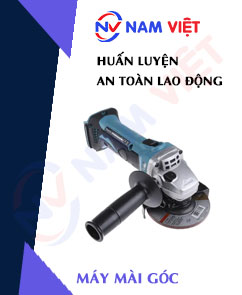
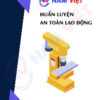
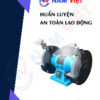





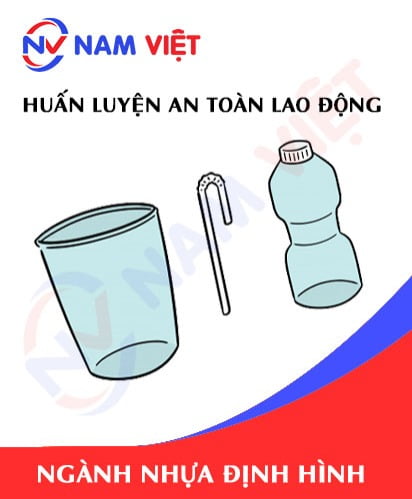

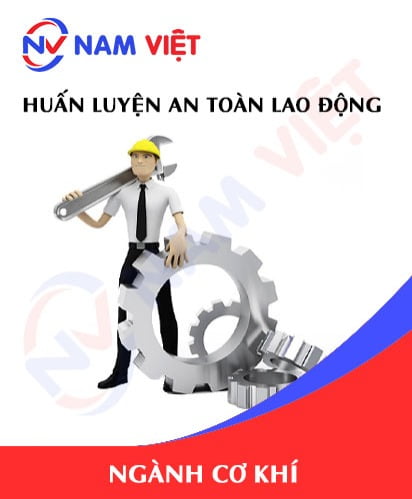

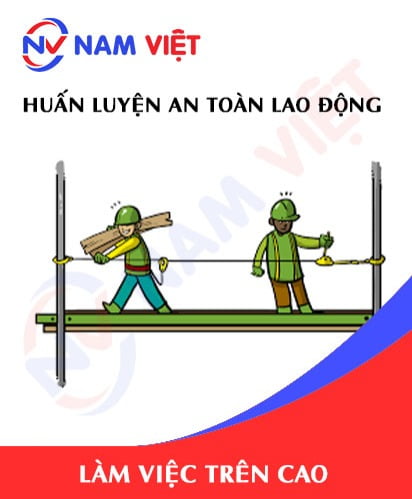

phanminhhang341
Dịch vụ tốt!!!